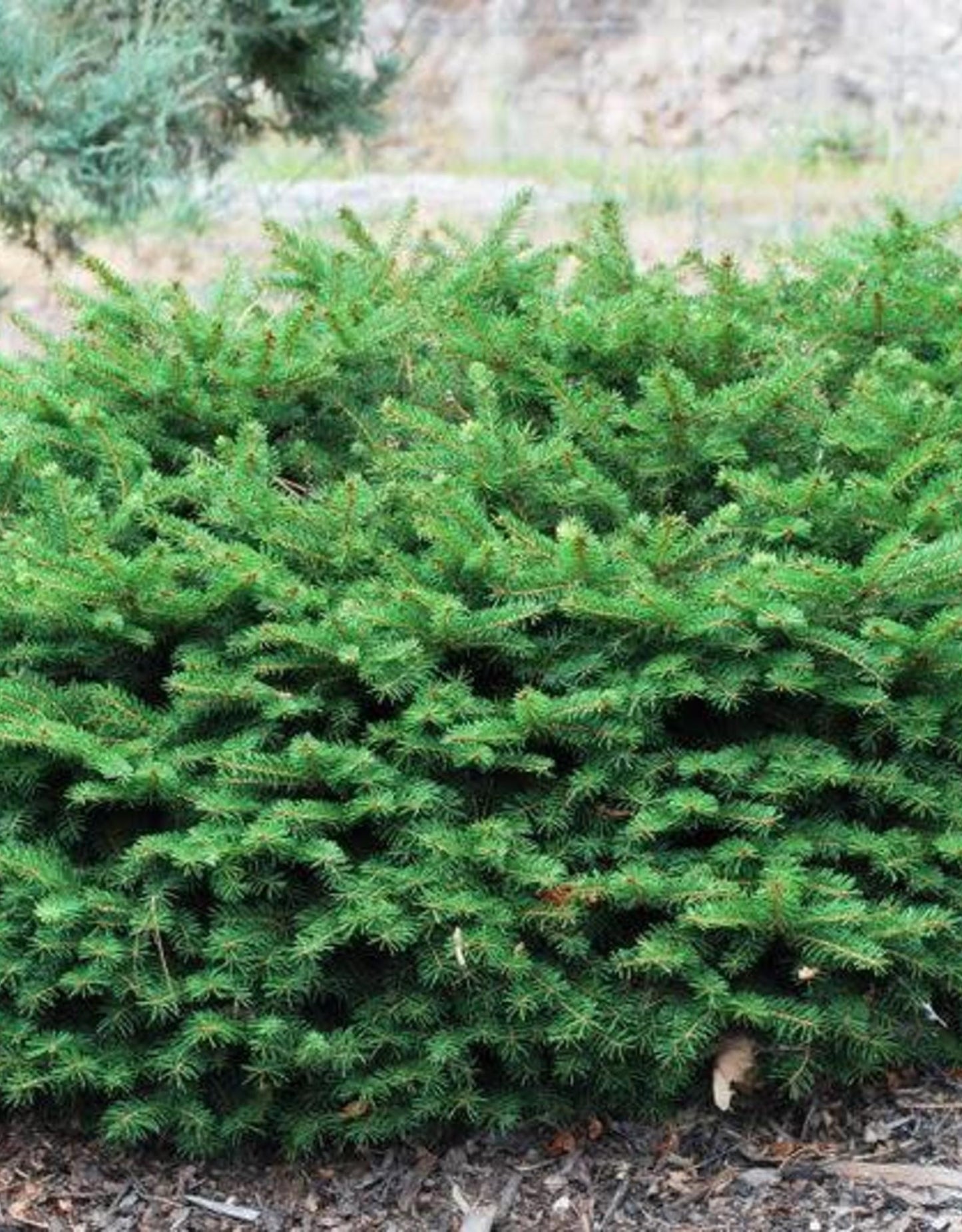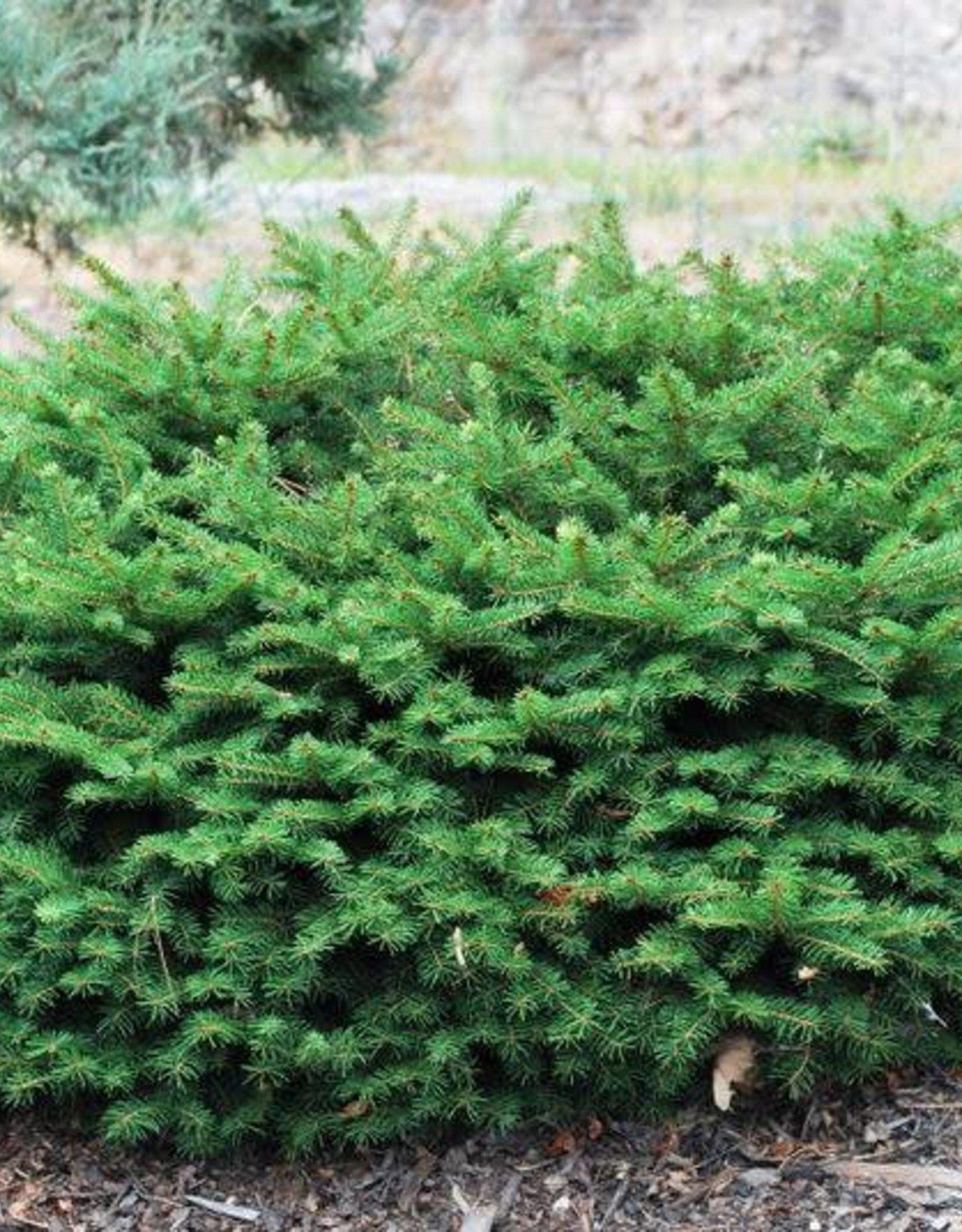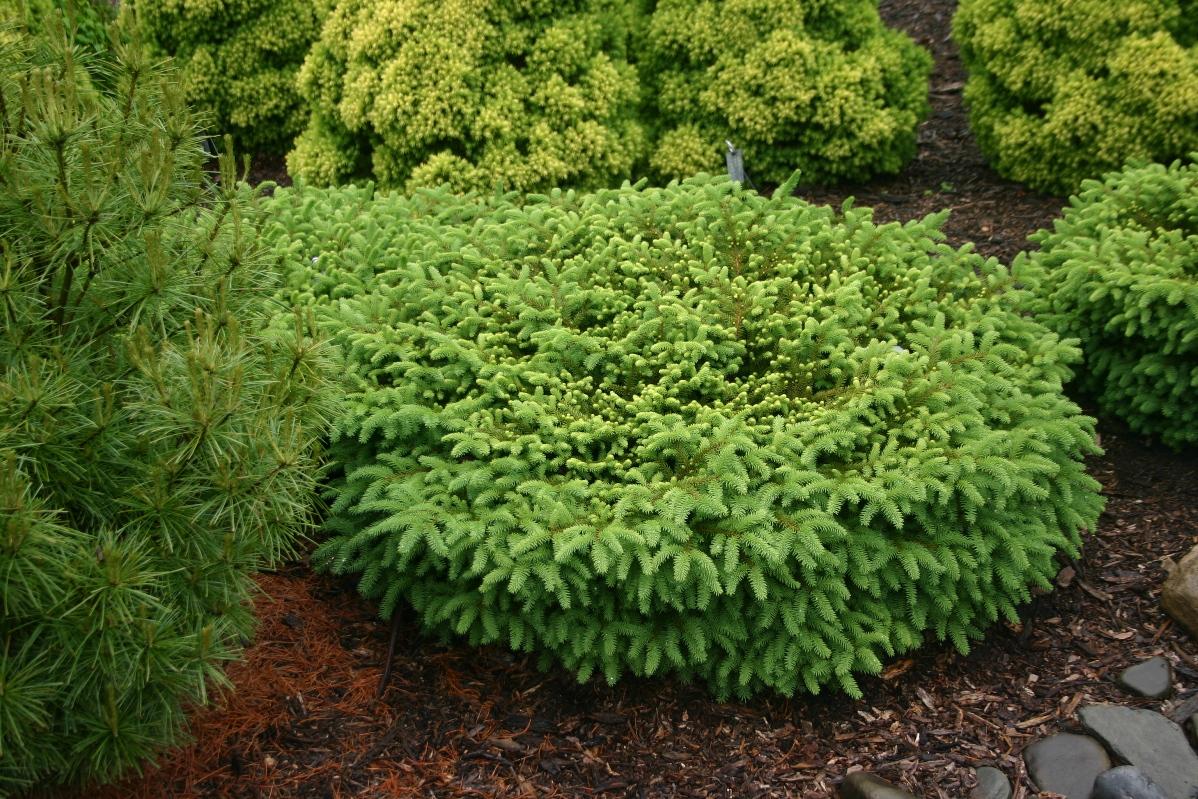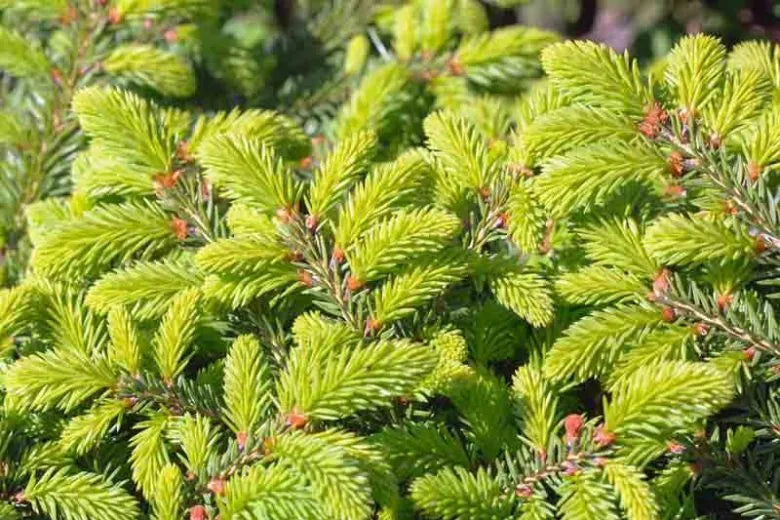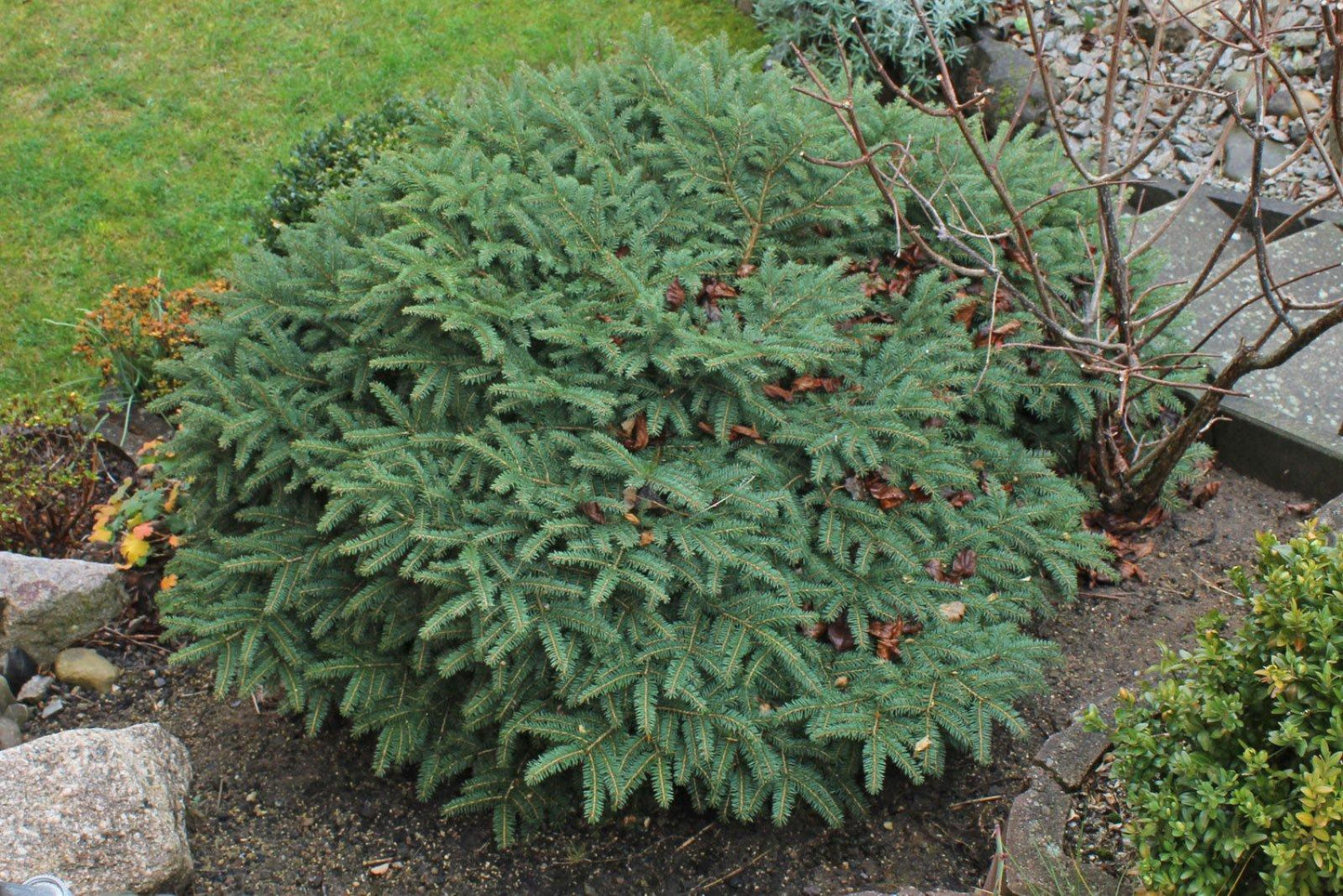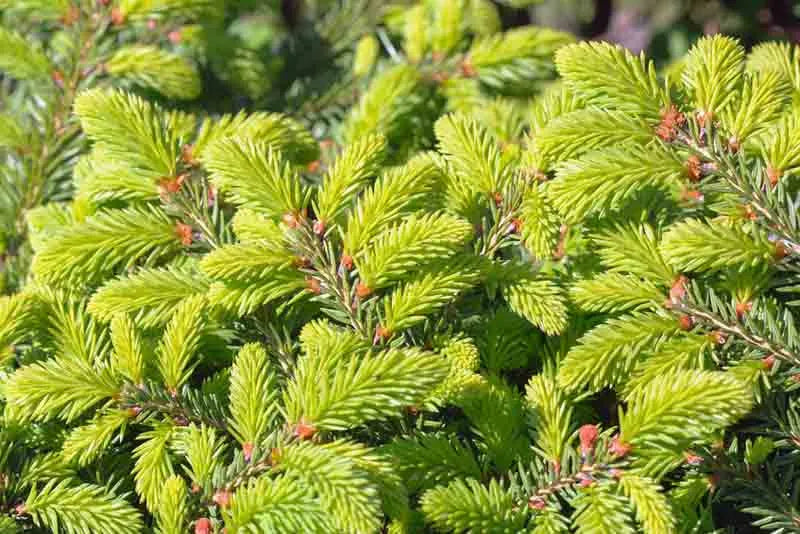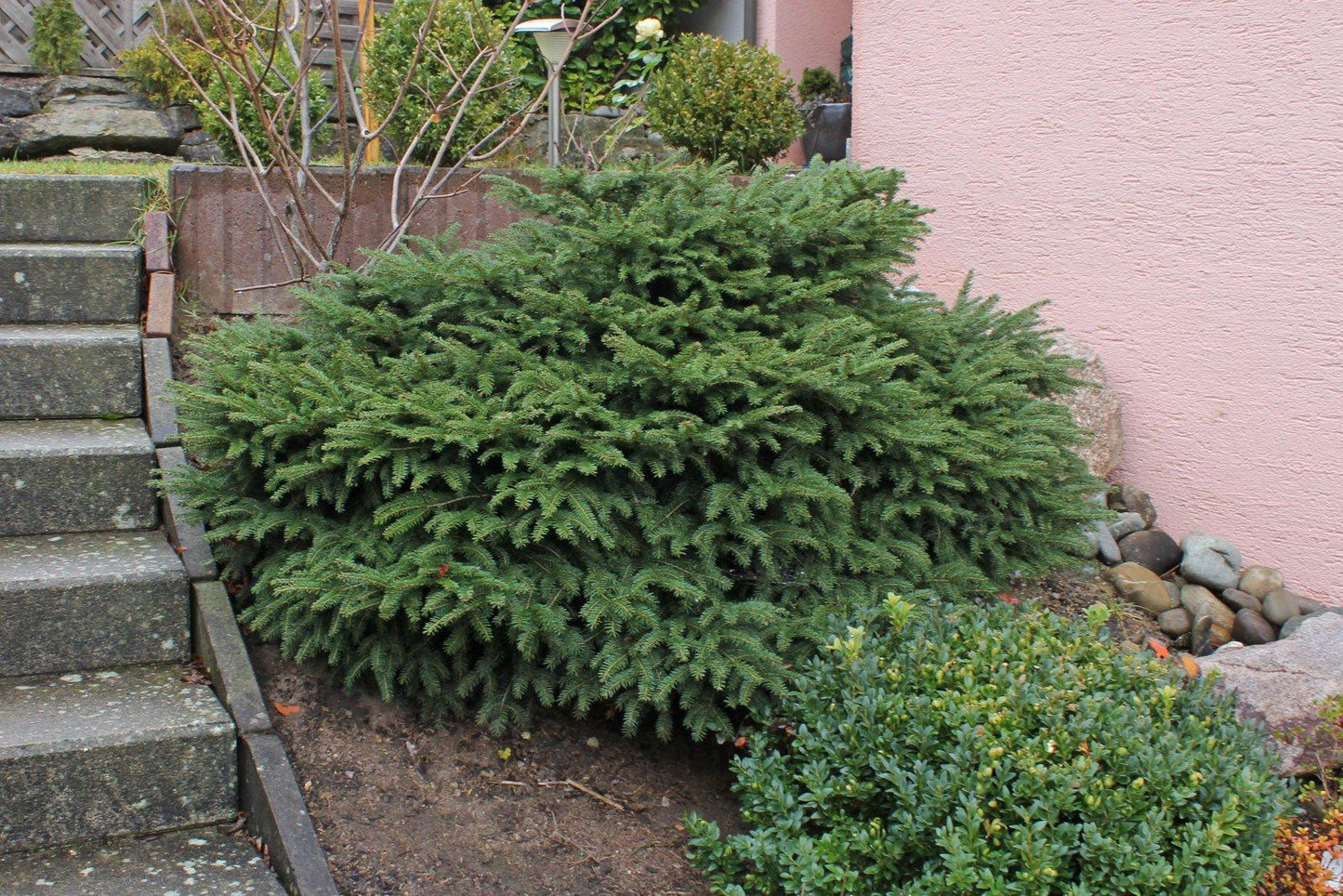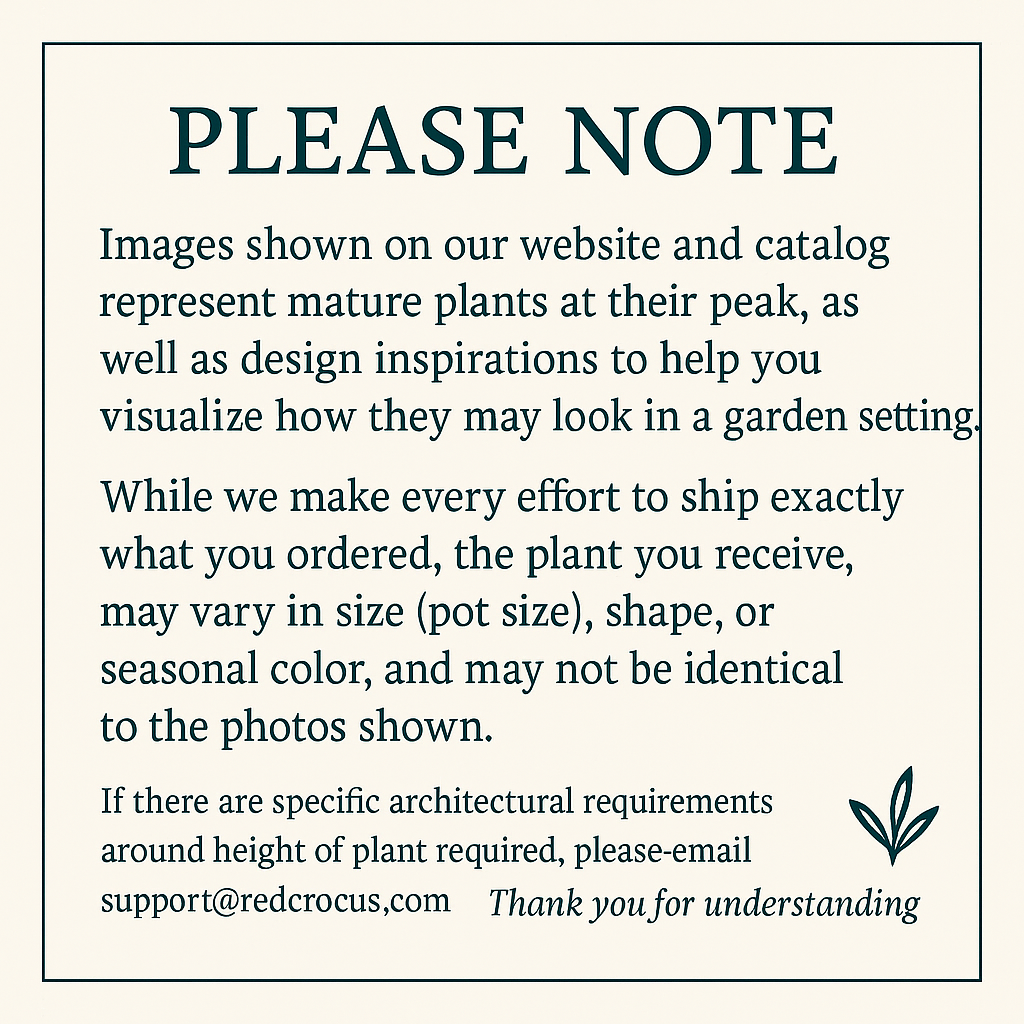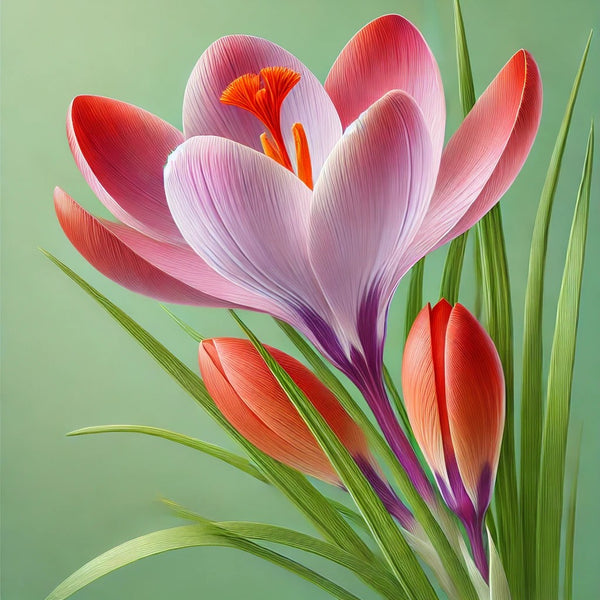1
/
of
23
Birdsnest Norway Spruce–Dwarf Evergreen–Compact Structure 1 Gallon
Birdsnest Norway Spruce–Dwarf Evergreen–Compact Structure 1 Gallon
Regular price
$56.00 USD
Regular price
$72.80 USD
Sale price
$56.00 USD
Unit price
/
per
Shipping calculated at checkout.
SKU:nse4412-redcrocus
Couldn't load pickup availability
Picea abies 'Nidiformis'
Description
Picea abies 'Nidiformis', commonly known as Birdsnest Norway Spruce, is a dwarf, evergreen conifer with a distinctive, flat-topped, nest-like shape. It features dense, short, dark green needles that create a lush, textured appearance. This slow-growing plant is perfect for adding structure and interest to gardens and landscapes.
Suggested Uses
This plant is ideal for rock gardens, borders, and as a specimen plant in small gardens. Its compact size makes it suitable for container planting, and it can also be used in mixed shrub borders to provide year-round interest.
Plant Details
-
 Botanical Name: Picea abies 'Nidiformis'
Botanical Name: Picea abies 'Nidiformis' -
 Common Name: Birdsnest Norway Spruce
Common Name: Birdsnest Norway Spruce -
 Size & Growth: Typically grows to 2-3 feet tall and 3-4 feet wide
Size & Growth: Typically grows to 2-3 feet tall and 3-4 feet wide -
 Hardiness Zones: 3-7
Hardiness Zones: 3-7 -
 Foliage Type: Evergreen
Foliage Type: Evergreen -
 Bloom Time: Non-flowering
Bloom Time: Non-flowering -
 Growth Rate: Slow
Growth Rate: Slow -
 Light Requirements: Full sun to partial shade
Light Requirements: Full sun to partial shade -
 Attracts Pollinators: No
Attracts Pollinators: No -
 Indoor Friendly: No
Indoor Friendly: No -
 Container Friendly: Yes
Container Friendly: Yes -
 Deer Resistant: Yes
Deer Resistant: Yes -
 Pet Warning: Non-toxic
Pet Warning: Non-toxic -
 Fragrant: No
Fragrant: No -
 Cut Flower: No
Cut Flower: No -
 Grows Well With: Other dwarf conifers, heathers, and low-growing perennials
Grows Well With: Other dwarf conifers, heathers, and low-growing perennials
Care Tips
-
 Planting Instructions: Plant in well-drained soil, slightly acidic to neutral pH
Planting Instructions: Plant in well-drained soil, slightly acidic to neutral pH -
 Soil Moisture: Keep soil consistently moist but not waterlogged
Soil Moisture: Keep soil consistently moist but not waterlogged -
 Soil Type: Prefers sandy or loamy soil
Soil Type: Prefers sandy or loamy soil -
 Humidity: Tolerates average humidity levels
Humidity: Tolerates average humidity levels -
 Pruning Instructions: Minimal pruning required; remove dead or damaged branches
Pruning Instructions: Minimal pruning required; remove dead or damaged branches -
 Winter Care: Mulch to protect roots in colder zones
Winter Care: Mulch to protect roots in colder zones -
 Planting Depth: Plant at the same depth as the nursery container
Planting Depth: Plant at the same depth as the nursery container -
 Fertilization: Apply a balanced, slow-release fertilizer in spring
Fertilization: Apply a balanced, slow-release fertilizer in spring -
 Special Care: Monitor for pests such as aphids and spider mites
Special Care: Monitor for pests such as aphids and spider mites
Share



